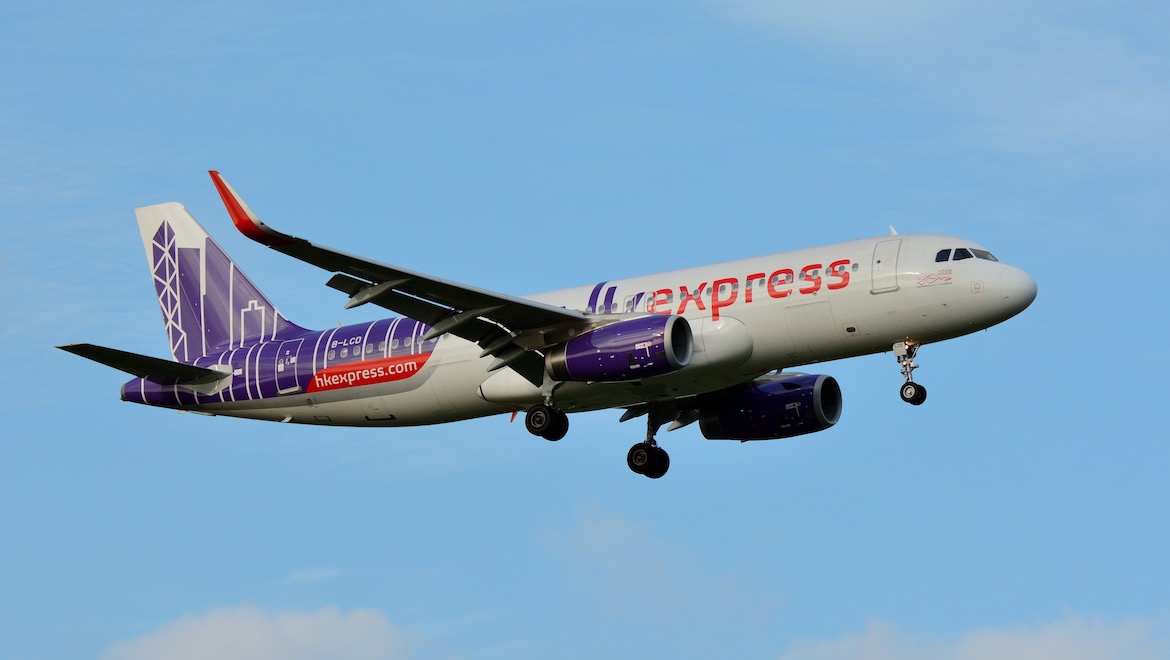
Cathay Pacific will add a low-cost carrier (LCC) to its business after agreeing to buy HK Express (HKE) from HNA Aviation Group for HK$4.93 billion (A$885 million).
The deal gives Cathay Pacific an LCC operating 24 narrowbody Airbus A320 family aircraft to destinations in China, Japan, Malaysia, South Korea, Taiwan, Thailand and Vietnam and greater exposure to the budget or leisure market segment.
Cathay Pacific said in a regulatory filing to the Stock Exchange of Hong Kong on Wednesday the transaction comprised HK$2.25 billion cash and a non-cash component of HK$2.68 billion in the form of promissory loan notes.
The filing said the transaction was “expected to generate synergies as the businesses and business models of Cathay Pacific and HKE are largely complementary”.
“The transaction represents an attractive and practical way for the Cathay Pacific Group to support the long-term development and growth of its aviation business and to enhance its competitiveness,” Cathay Pacific said.
HK Express would continue operating as a standalone airline and maintain its LCC business model.
The sale of HK Express to local rival Cathay Pacific continues HNA’s ongoing corporate restructure, which has involved selling assets as part of efforts to reduce debt and improve its financial position.
HNA also owns full-service carrier Hong Kong Airlines and has a 20 per cent stake in Virgin Australia.

Cathay Pacific first acknowledged it was considering buying HK Express on March 5.
The acquisition of an LCC marks a change of direction for Cathay Pacific, which has long stated it did not need a budget arm to compete at that segment of the market.
Even if Cathay Pacific had been inclined to launch an LCC, it would have struggled to grow its market share in Hong Kong, given the limited number of takeoff and landing slots at the busy Chek Lap Kok Airport, prior to the opening of the third runway in 2024.
“In Hong Kong there are virtually no available slots,” aviation thinktank CAPA – Centre for Aviation said in a research note dated March 26.
“While for several years Cathay Pacific has refrained from launching an LCC subsidiary for strategic reasons, congestion at Hong Kong has also been a factor.”
Having HK Express part of the airline group alongside the main Cathay Pacific airline and regional wing Cathay Dragon would increase the company’s capacity share in terms of available seats at Hong Kong by five percentage points to about 51 per cent, figures from CAPA showed.
“There is no denying that the bottom end of the market is growing faster with the rapid expansion in Asia’s middle class and income levels. This is true for Asia overall, and would be true for Hong Kong if it were not for infrastructure and other constraints,” CAPA said.
“The Cathay Pacific Group could have waited until 2024 to launch an LCC. However, the opportunity to jump-start a new multi-brand strategy with HK Express was too good to pass up, and Cathay could not risk HK Express being sold to a competitor.”
The Cathay Pacific filing said HK Express posted a net loss after tax of HK141 million for the 12 months to December 31 2018 and a net loss after tax of $60 million in the prior year.
Previously, Cathay Pacific opposed the establishment of Jetstar Hong Kong, a proposed joint-venture between China Eastern, Hong Kong-based Shun Tak Holdings and Qantas that was launched in March 2012 but refused an operating licence by the Hong Kong Air Transport Licensing Authority (ALTA) in June 2015.
Cathay Pacific is in the last year of a three-year business transformation plan that comprised a reorganisation of the business, hundreds of staff layoffs and adding more seats on existing aircraft, among other initiatives.
The airline has been battling the rapid international expansion of Chinese airlines and the ongoing rise of Middle East carriers offering long-haul to long-haul connections through their hubs that have bitten into previously lucrative markets.
In particular, the growth of Chinese carriers on international routes has reduced the number of passengers from China transiting through Cathay’s Hong Kong hub.
And at the budget end, Asia-based low-cost carriers have won passengers happy to pay lower fares for a no-frills product on short- and medium-haul routes.
The latest indications showed the turnaround was gathering pace, with Cathay Pacific reporting a return to profitability in calendar 2018, ending two consecutive years of losses.










